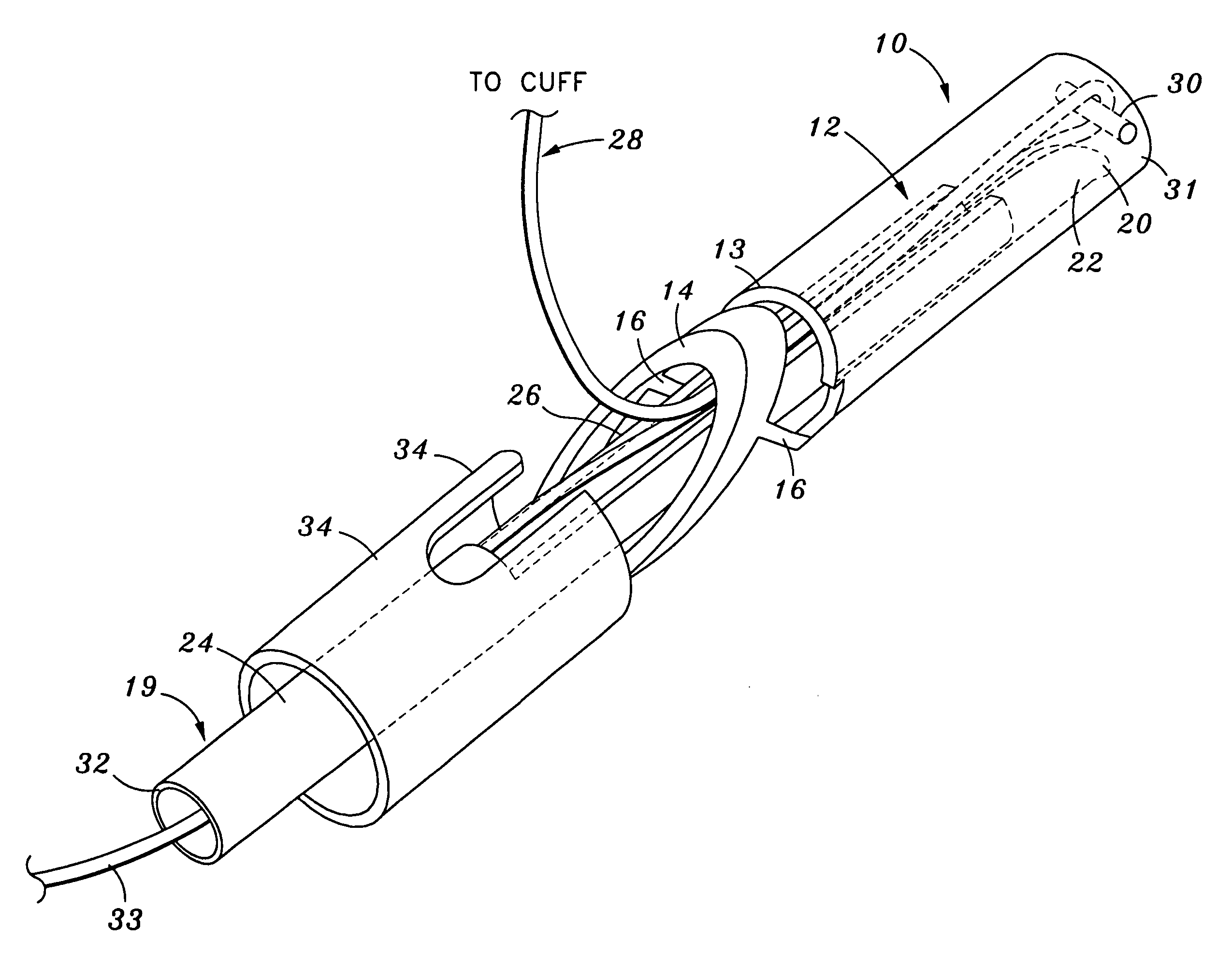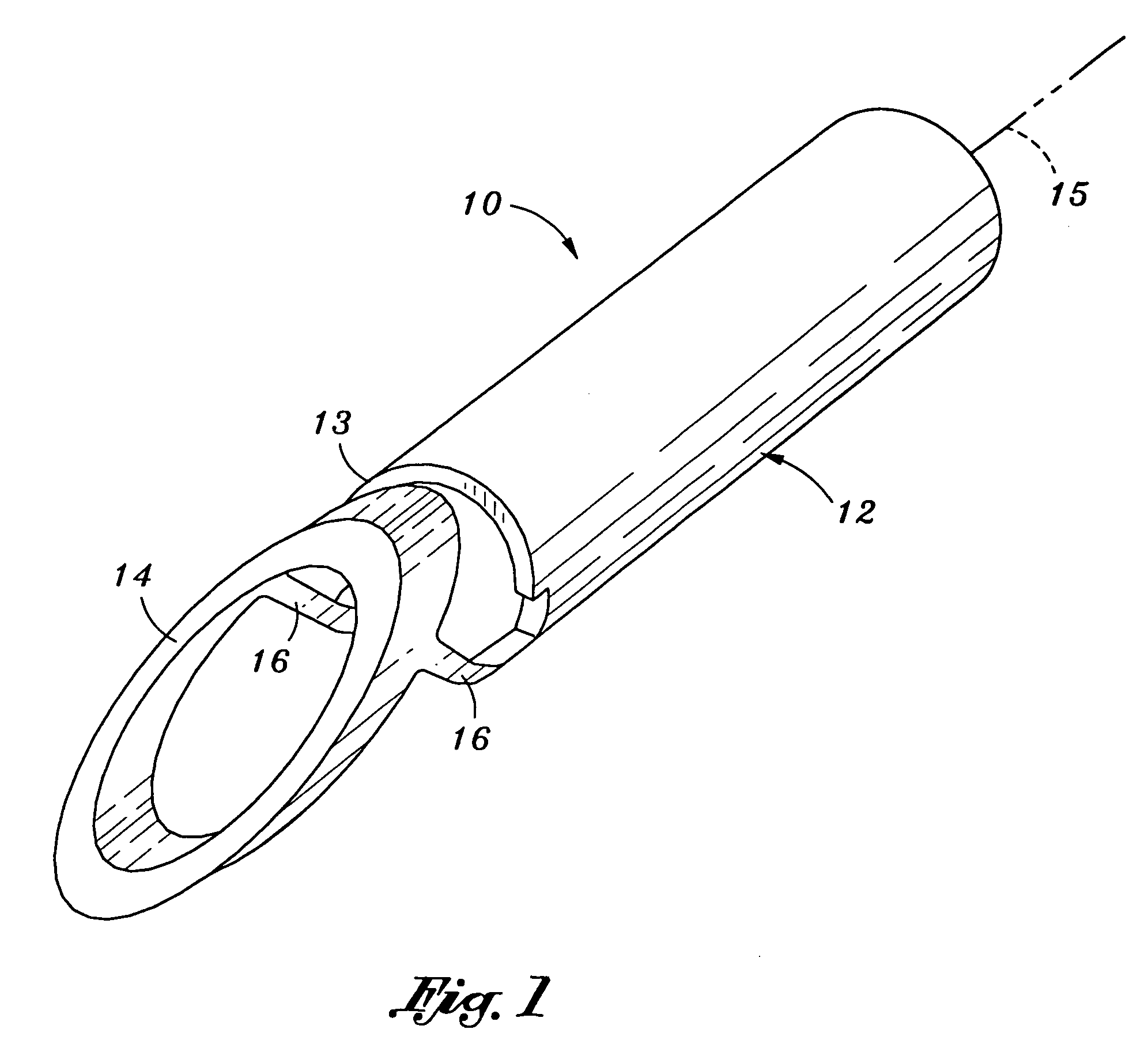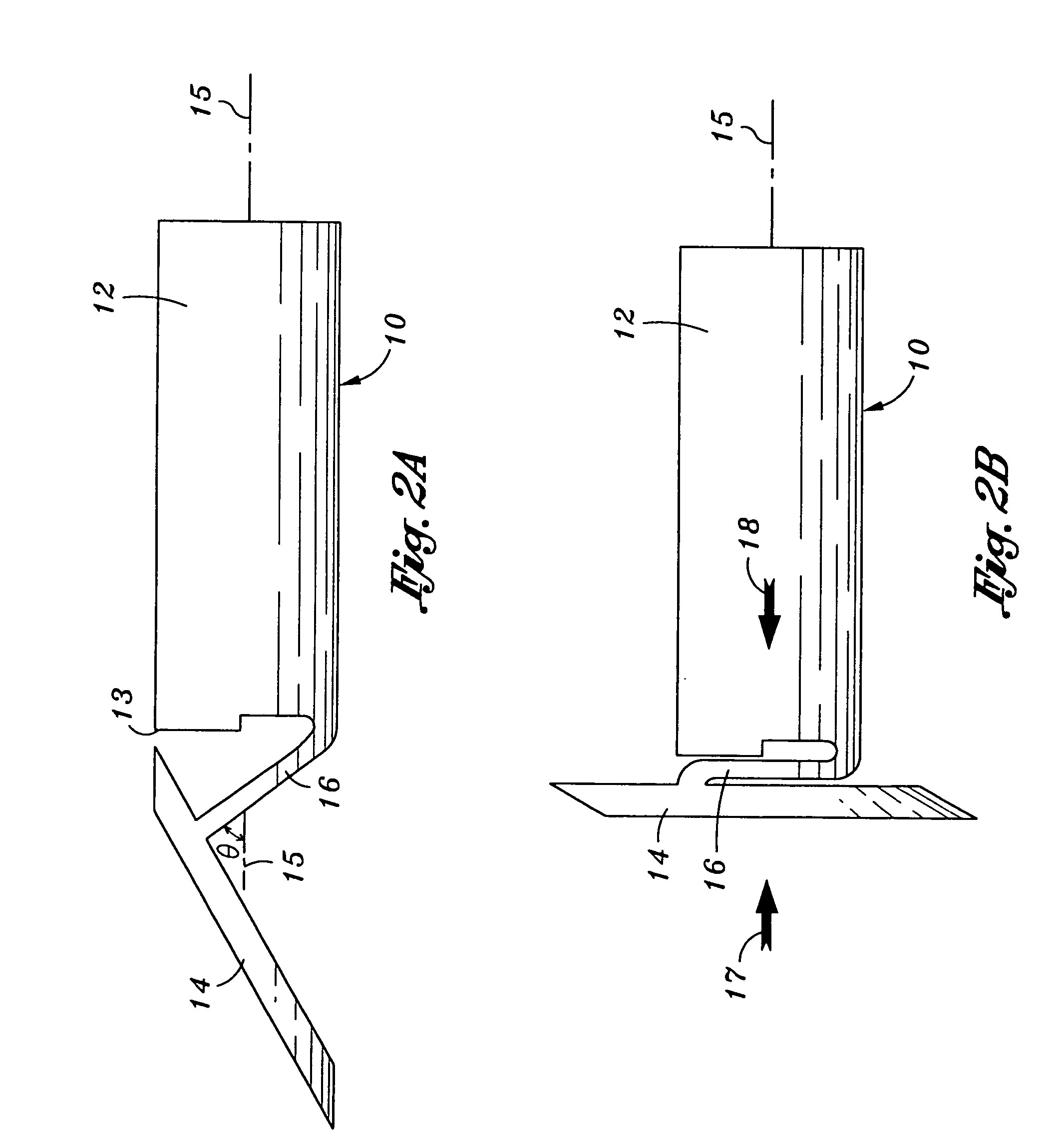It is an increasingly common problem for tendons and other soft, connective tissues to tear or to detach from associated bone.
One such type of tear or detachment is a “
rotator cuff” tear, wherein the supraspinatus
tendon separates from the
humerus, causing pain and loss of ability to elevate and externally rotate the arm.
Because of this maneuver, the deltoid requires postoperative protection, thus retarding
rehabilitation and possibly resulting in residual
weakness.
Although the above described surgical techniques are the current
standard of care for rotator
cuff repair, they are associated with a great deal of patient discomfort and a lengthy
recovery time,
ranging from at least four months to one year or more.
It is the above described manipulation of the deltoid
muscle together with the large
skin incision that causes the majority of patient discomfort and an increased
recovery time.
Unfortunately, the
skill level required to facilitate an entirely arthroscopic repair of the rotator
cuff is inordinately high.
Intracorporeal suturing is clumsy and
time consuming, and only the simplest stitch patterns can be utilized.
Extracorporeal knot tying is somewhat less difficult, but the tightness of the knots is difficult to judge, and the tension cannot later be adjusted.
So, knots tied arthroscopically are difficult to achieve, impossible to adjust, and are located in less than optimal areas of the shoulder.
Suture tension is also impossible to measure and adjust once the knot has been fixed.
Consequently, because of the technical difficulty of the procedure, presently less than 1% of all rotator
cuff procedures is of the arthroscopic type, and is considered investigational in nature.
Another significant difficulty with current arthroscopic rotator cuff repair techniques is shortcomings related to currently available
suture anchors.
Suture eyelets in
bone anchors available today, which like the eye of a needle are threaded with the thread or suture, are small in
radius, and can cause the suture to fail at the eyelet when the anchor is placed under high tensile loads.
Screws are known for creating such attachments, but existing designs suffer from a number of disadvantages, including their tendency to loosen over time, requiring a second procedure to later remove them, and their requirement for a relatively flat attachment geometry.
These anchors still suffer from the aforementioned problem of eyelet design that stresses the sutures.
Other methods of securing
soft tissue to bone are known in the prior art, but are not presently considered to be feasible for shoulder repair procedures, because of physicians' reluctance to leave anything but a suture in the
capsule area of the shoulder.
The reason for this is that staples, tacks, and the like could possibly fall out and
cause injury during movement.
Also, the tacks or staples require a substantial hole in the
soft tissue, and make it difficult for the surgeon to precisely locate the soft tissue relative to the bone.
This approach is a useful method for creating an
anchor point for the suture, but does not in any way address the problem of tying knots in the suture to fix the soft tissue to the bone.
Although the Golds et al. patent approach utilizes a wedge-shaped member to lock the sutures in place, the suture legs are passing through the bore of the bead only one time, in a proximal to distal direction, and are locked by the collapsing of the wedge, which creates an interference on the longitudinal bore of the anchor member.
Also, no provision is made in this design for attachment of sutures to bone.
However, the
system is disadvantageous in that it is complex, difficult to manipulate, and still requires the tying of a knot in the suture.
Although there is some merit to this approach for eliminating the need for knots in the attachment of sutures to bone, a problem with being able to properly set the tension in the sutures exists.
This action increases the tension in the sutures, and may garrot the soft tissues or increase the tension in the sutures beyond the tensile strength of the material, breaking the sutures.
In addition, the minimal surface area provided by this anchor design for pinching or locking the sutures in place will abrade or damage the suture such that the suture's ability to
resist load will be greatly compromised.
Although this embodiment purports to be a self-locking anchor adapted for use in blind holes for fixing sutures into bone, the construct shown is complicated, and does not appear to be adequate to reliably fixate the suture.
The Bartlett patent approach, while innovative, is disadvantageous to the extent that it involves the use of a unique and complex
insertion tool, and can be difficult to deploy.
It also does not permit suturing of the soft tissue prior to anchoring the suture to bone, and thus does not permit tensioning of the suture to approximate the soft tissue to bone, as desired, at the conclusion of the suturing procedure.
Additionally, in preferred embodiments, the suture is knotted to the anchor, a known
disadvantage.
Consequently, there is no opportunity to tension the suture, as desired, to optimally approximate the soft tissue to the bone upon completion of the surgical procedure.
Additionally, the approach is complex and limited in flexibility, since the suture is directly engaged with the bone anchoring body.
There is also the possibility that the bone anchoring body will not sufficiently rotate to firmly become engaged with the
cancellous bone before the
insertion tool breaks away from the anchor body, in which case it will be impossible to properly anchor the suture.
Of course, this
system has similar disadvantages to those of the Pedlick et al.
system, and requires the suture to be directly engaged with the bone anchoring body.
 Login to View More
Login to View More  Login to View More
Login to View More 


